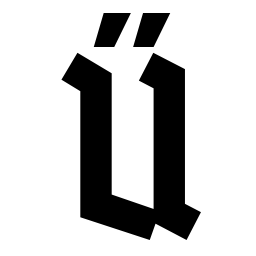Raw pointers¶
Ü has raw pointer types that are somewhat close to the pointer types in some low-level programming languages like C. Syntactically raw pointers in Ü are different comparing to C, but the meaning is similar.
Raw pointers are intended for usage in low-level code like containers, foreign language interaction, etc.
There is no reference checking for raw pointers, thus pointer dereference operation is allowed only inside unsafe code.
Raw pointer type is declared with $ symbol and following element type name in ().
Examples:
type i32_ptr = $(i32); // pointer to "i32".
type tup_ptr = $(tup[i32, f32]); // pointer to a tuple.
type bool_ptr_ptr = $($(bool)); // pointer to pointer to "bool".
A value of raw pointer type may be obtained from a mutable reference via special operator, that consists of $< and following expression in ().
Backward conversion (from a raw pointer to reference) is performed via dereference operator $>.
var i32 mut x= 0;
var (i32) x_ptr = $<(x); // Convert reference to "x" into raw pointer.
unsafe{ $>(x_ptr) = 24; } // Dereference pointer value and assign something to this value. This is allowed only in unsafe code.
It’s important to mention that raw pointers in Ü have no mutability modifiers (unlike C). All raw pointers are considered to point to mutable data. Thus a raw pointer may be obtained only from a mutable reference and dereference operator returns mutable reference.
zero_init initializer is supported for raw pointer types.
Pointer arithmetic¶
It’s possible to perform some arithmetic operations with raw pointers. Following operations are possible:
Pointer and integer number addition. It’s allowed to perform addition with signed and unsigned integers, but with integer size no more than pointer size. It’s possible to add a number to pointer or a pointer to number (the order of the operands doesn’t matter). There is
+=operator for a pointer and a number. The result of the addition is a pointer that points to address that is greater than original by value of the integer multiplied by the pointer element size in bytes.Subtraction of an integer from a pointer. It’s allowed to subtract signed or unsigned integer from a pointer. The size of an integer must be no more than pointer size. There is
-=operator for a pointer and a number. The result of the subtraction is a pointer that points to address that is less that original by value of the integer multiplied by the pointer element size in bytes.Pointers difference. It’s allowed to calculate pointers difference via
-operator. The element type should have non-zero size. The result of the pointer difference is an integer number of typessize_typethat is equal to address difference divided by the pointer element size.Increment and decrement. It’s allowed to use
++and--for pointers. The value of a pointer will be increased or decreased by the element size.Pointer comparison. All compare operators (
==,!=,<,<=,>,>=) are allowed for pointers.
Examples:
var [ i32, 8 ] mut arr= zero_init;
var $(i32) ptr0= $<(a[0]);
auto ptr3 = ptr0 + 3; // ptr3 points to arr[3]
auto ptr4 = 4 + ptr0; // ptr4 points to arr[4]
auto diff5_2 = $<(a[5]) - $<(a[2]); // diff = 3
auto diff1_6 = $<(a[1]) - $<(a[6]); // diff = -5
auto mut ptr = $<(a[2]); // ptr points to arr[2]
++ptr; // ptr now points to arr[3]
ptr+= 3; // ptr now points to arr[6]
--ptr; // ptr now points to arr[5]
ptr-= 4; // ptr now points to arr[1]
auto is_3_less_4 = ptr3 < prt4; // true
auto is_3_greater_0 = ptr3 > prt0; // true
auto is_3_equal_4 = ptr3 == prt4; // false
auto is_4_less_or_equal_4 = ptr4 <= ptr4; // true
